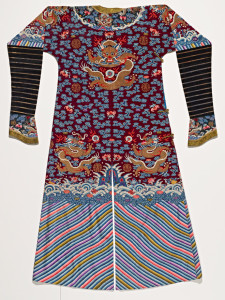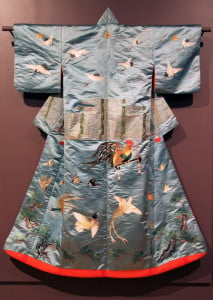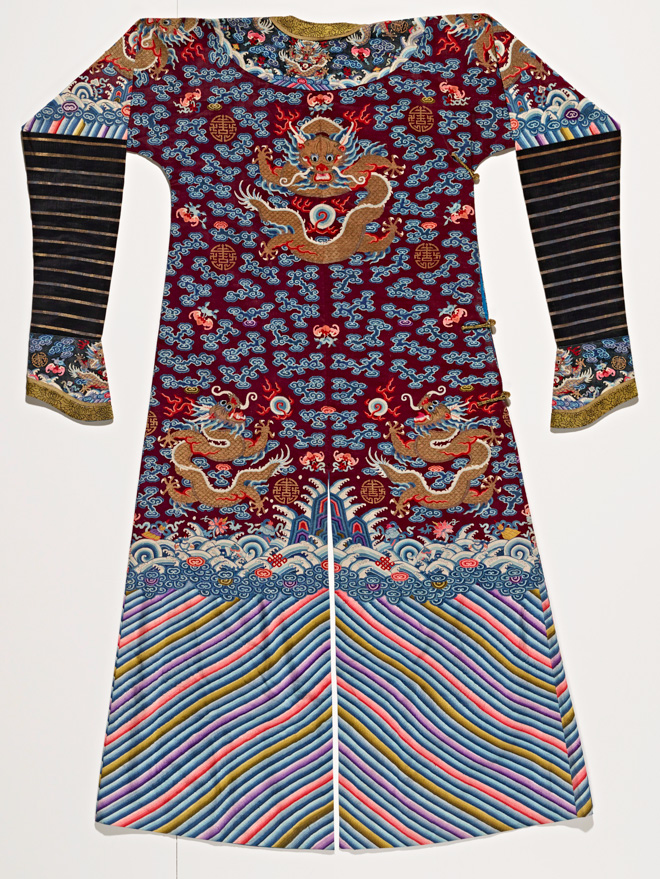
The experience of viewing “Showing Off” is surreal, like stepping into a giant time capsule. “Showing Off” explores how the design language of East Asian cultures translates to fashion by flaunting an incredible collection of East Asian garments from antiquity. It is especially interesting to note the similarities between garments across different cultures as well as how these traditional costumes transform utilitarian objects into technically astounding works of far art.
Huge, billowing gowns are hung up on elevated platforms around the walls of the gallery space, encased in glass and individually illuminated, heightening the sense of beauty and opulence given off by the pieces on display. The fact that the pieces are displayed in this way, spaced far apart from each other and individually highlighted, gives the garments a sense of timelessness and a certain fantastical charm.
East Asian artwork – fashion included – is known for being aggressively stylized. Commonalities across garments of different cultures include long, imposing silhouettes, imagery from nature and hard-edged iconographic artwork. Visual elements in the clothing designs frequently draw from oriental folklore, including gold-embroidered dragons, winged creatures and spiraling ocean waves. Line work is generally hard-edged and curved.
A prime example of this is the Qing dynasty men’s dragon robe on display. Compositionally, the piece features three dragons arranged in a sharp triangular formation, which is counterbalanced by the repeating round, circular patterns on the garment (e.g. rolling ocean waves and clouds). The result of this juxtaposition is a costume that commands attention and masterfully coordinates all of the intricacies that make up its design.
One of the more subdued pieces in the exhibit, a robe from the Japanese Edo period, forgoes animal imagery but maintains the same propensity for repeating patterns and contrasting textures. The piece, likely meant for everyday wear, combines indigo-dyed cotton with fiber harvested from the bark of Japanese elm trees.
Arguably the two centerpieces of the exhibit, positioned on the back wall of the space, are a pair of garments also from Japan’s Edo period: a dancer’s costume and a winter-themed kimono. Spread out fully across the wall side-by-side, the garments loom over the viewer in an expanse of cool slate blue interspersed with gaudy golden accents. Here, the sheer size of the pieces, combined with the reflectiveness of the material, entrances the viewer and exudes a sense of royalty.

My personal favorite pieces from the exhibit were a pair of warriors’ helmets, simply because of how incredible and dreamlike the experience of viewing them was – as if concept art from cartoons and movies had come to life. Originating from feudal Japan, the helmets resemble masks contorted into menacing expressions, with sharp metallic accents jutting out in all directions.
“Showing Off” attests to the power of costume and apparel to immortalize a civilization. Fantastical as it is engaging, the exhibit uses fashion design as a means of reviving the visual languages of old and – if only for a brief moment – bringing us back in time.
“Showing Off” is on view at the Cantor Arts Center until May 23, 2016.
Contact Eric Huang at [email protected].
